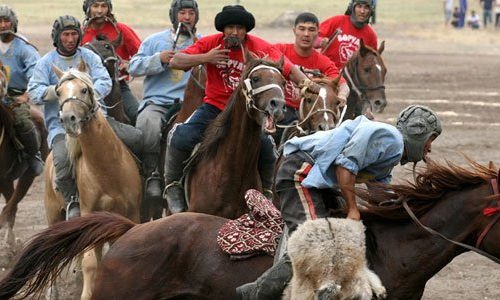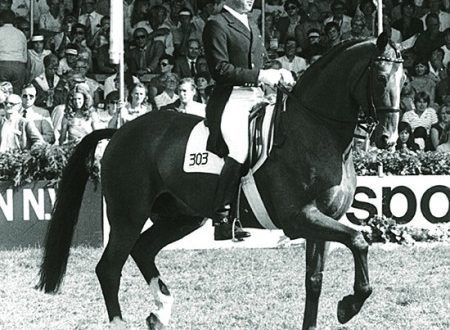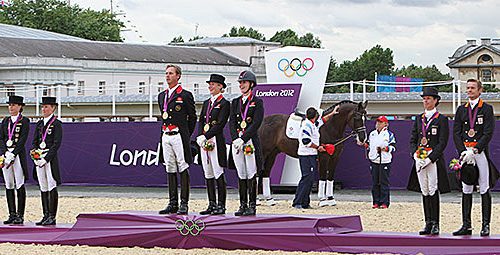
About the types of saddles and their effect on the rider’s position
About the types of saddles and their effect on the rider’s position
There are several types of saddles designed for different disciplines and types of riding. The most common are: 1. “English” (European) saddles, which are used in the “Olympic disciplines” of equestrian sports, as well as for everyday riding.
This group of saddles includes those with the most vertical wings dressage saddles:
When riding in a dressage saddle, the stirrups drop lower than when riding in a jumping saddle.
jumping saddles (wings pushed forward to provide a more stable landing during jumps, stirrups when riding are raised higher than when riding in dressage saddles):
Finally, universal saddles – a kind of compromise between show jumping and dressage saddles.
The saddle shown in the photo above is closer to show jumping than dressage.
All purpose saddles are designed for riders who practice the two respective equestrian disciplines. If you are more into show jumping than dressage, get a saddle that is closer to show jumping and vice versa.
All these kinds of English saddles have soft cushions at the bottom. , which should match the shape of the horse’s back.
2. Western saddles also have many variations, depending on which of the disciplines they are intended for.
They usually have a handle on the pommel – a ledge around which you can tie the end of a lasso when catching cattle. Western saddles don’t have pads on the bottom, so they’re only used with thick pads or saddle pads.
3. Australian saddles evolved from English cavalry saddles, but are used for the same purposes as Western saddles. You can spend hours in them without compromising the health of the horse (for example, while grazing).
There are variations among saddles of this type. Like Western saddles, Australian saddles are designed to give the rider a comfortable and firm seat when riding over rough terrain, making sharp turns and manoeuvres. Like English saddles, they are equipped with cushions from below.
4. Walking saddles are a combination of Western and Australian saddles. They are becoming increasingly popular, combining the comfort of a western saddle with the structure of an Australian. Pillows underneath are not included.
Why is choosing the right saddle so important?
It is important that the type of saddle you ride is appropriate for the riding style and discipline you are training. So, if you decide to practice show jumping, a Western Australian or dressage saddle will not suit you for training.
If you ride in different disciplines and practice different types of riding, you may need several types of saddles. Thus, it is advisable for triathlon riders to purchase both dressage and show jumping saddles, especially if they participate in high-level competitions.
When you are working on Dressage Testing, you need to aim for a fit that is close to perfect (see picture below). If you sit correctly, then landing clearly on both feet (imagine that the horse was removed from under you), you will not fall forward or backward. It is in this position that you will be able to properly use all your controls and not hurt the horse.
Your saddle plays a crucial role in the correct position of your legs (picture below) and body. And this correct position, in turn, makes a huge difference in riding efficiency.
The position of the rider’s leg is determined by the position of the putlisch attachment.
If you don’t jump at all, you can ride in an Australian, western or dressage saddle – the choice depends on your specific goals.
These types of saddles, although different from each other, somehow position the lower part of your leg under your hip. Modern dressage saddles do the job best. The other two saddles also bring your leg closer to the correct “dressage” position, especially if the stirrers are pulled back. Note that the protruding part of the saddle (fork) may prevent you from relieving yourself at the posting trot.
As for show jumping and all-purpose saddles, they won’t help you get your leg under your hip as they are designed with the shannels pushed forward, which helps the rider to ride with shorter stirrups, on the front between and during jumps. The picture below shows where your foot will be placed in a show jumping and utility saddle.
See why a rider can’t get his legs under his hips in a show jumping or all-round saddle – the schneller is too far forward. In the first picture below you can see the difference between the mounts on a jumper saddle and a dressage saddle.
If a rider in a jump saddle tries to place his leg so that the leg is located under the lock, then we see a discrepancy between the actual location of the trigger (a) and the location that will allow him to do this (b).
Below is what happens if a rider in a jumping or utility saddle tries to put his heels under his hips: the stirrup moves back.
If the rider tries to place his heels directly under the hips (to achieve a proper shoulder-thigh-heel line), he will have to pull the stirrup back.
This leg position is difficult to maintain and will eventually move forward again. In the picture below, the legs are again in the position that the saddle puts them in, due to their design.
Because this position is too difficult to maintain for long periods of time, the rider’s legs end up sleeping. move far ahead.
Riding in a saddle that puts your foot in the right position (such as a dressage saddle) will help you perform better. You will begin to understand why it is so difficult for you to place your foot correctly when you are sitting in the wrong saddle.
In a dressage saddle with the studs in the right place, it is much easier for the rider’s legs to get into the correct position.
A good modern dressage saddle not only has properly placed shnellers, but also cushions that help position the rider’s thigh accurately.
Before buying a saddle, ask yourself the question: do the pads help you place your foot on the fender correctly or, on the contrary, do they get in the way? Pay close attention to my words: good dressage saddle!
The fact is that some older dressage saddles have shnellers too far forward. Try the saddle before you buy!
So, the first thing you will have to decide is what style of food (equestrian discipline) you will practice. If you are going to jump, then a show jumping saddle with forward shnellers and wings will suit you. An all-round saddle will also suit you in the early stages (beginner).
If you’re not going to jump, opt for a straight-wing saddle because you’ll find it easier to ride in a classic riding position with your heels under your hips.
When choosing a saddle, the width and depth of the seat of the saddle also matter.
Saddles can be narrow or wide, flat or deep.
All riders are unique, as are their saddle requirements. Therefore, we will offer you some tips, which will help you better understand what you need to pay special attention to, realize your own wishes.
- Some people are narrow pelvis (narrow hips are more common in men than women), and some are wide. A person with a wide pelvis will not be comfortable in a narrow saddle, since the pelvic bones in this arrangement will not be able to properly support the weight of the rider.
- Some people are much more flexible than others and can pull their hips back more easily than other riders. Even with almost the same build but different elasticity and flexibility, riders will need different seat widths.
- If the saddle is deep, then some riders will feel comfortable in it, while others, on the contrary, will feel uncomfortable and too deep.
- Some riders have injuries that require an individual approach.
- The weight of the rider affects the position of the hip and leg. Excess weight turns the saddle outward.
- Horse width. Some horses and riders do not fit together physically.
Most riders find it easy to find a saddle that fits both them and their horses. But some face difficulties.
If you find it difficult to make a choice, having studied the literature and materials on the Internet, you can see how the saddles you like suitable for other riders of a similar build to you and their horses.
Does an inexperienced rider need a saddle that “holds” him?
Inexperienced riders sometimes think they need a certain type of saddle to help them “stay on horseback”. This approach is not entirely correct.
Buying a saddle that “holds you” (like a western) without addressing the issue of adjusting your fit and balance is counterproductive. You may be comfortable riding in such a saddle and fit your horse, but it won’t help you learn. It is not the saddle that should keep you on the horse, but your developed balance and sense of balance. It is a correct, independent and strong seat that makes a safe ride, not a saddle – a life buoy.
Jane Myers; translation by Valeria Smirnova (source)·





